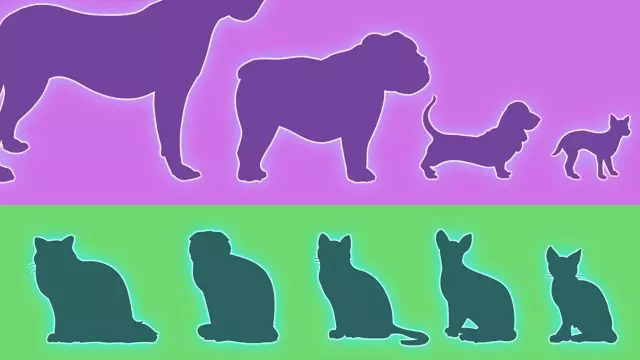2021-02-18
[public] 512K views, 33.5K likes, dislikes audio only
To make our work paw-sible, join us on Patreon at http://patreon.com/MinuteEarth!
Different dogs look incredibly different - but that doesn't mean they are necessarily more diverse.
LEARN MORE
**************
To learn more about this topic, start your googling with these keywords:
phenotypic diversity - the range of different observable traits in a certain organism - for example, size, color, strength, and friendliness.
genetic diversity - the variation in the genetic information within and among individuals of a population or species
artificial selection (or selective breeding) - a process used by humans to develop new organisms with desirable characteristics
SUPPORT MINUTEEARTH
**************************
If you like what we do, you can help us!:
- Become our patron: https://patreon.com/MinuteEarth
- Share this video with your friends and family
- Leave us a comment (we read them!)
CREDITS
*********
Kate Yoshida | Script Writer, Narrator and Director
Josh Taira | Illustration, Video Editing and Animation
Nathaniel Schroeder | Music
MinuteEarth is produced by Neptune Studios LLC
OUR STAFF
************
Sarah Berman • Arcadi Garcia Rius
David Goldenberg • Julián Gustavo Gómez
Melissa Hayes • Alex Reich • Henry Reich
Peter Reich • Ever Salazar • Kate Yoshida
OUR LINKS
************
Youtube | https://youtube.com/MinuteEarth
TikTok | https://tiktok.com/@minuteearth
Twitter | https://twitter.com/MinuteEarth
Instagram | https://instagram.com/minute_earth
Facebook | https://facebook.com/Minuteearth
Website | https://minuteearth.com
Apple Podcasts| https://podcasts.apple.com/us/podcast/minuteearth/id649211176
REFERENCES
**************
Hedrick P. & Andersson L. (2011) Are dogs genetically special? Heredity 106: 712–713. https://www.ncbi.nlm.nih.gov/pmc/articles/PMC3186234/
Lampi S. et al. (2020) Variation in breeding practices and geographic isolation drive subpopulation differentiation, contributing to the loss of genetic diversity within dog breed lineages. Canine Medicine and Genetics 7(1): 1-10. https://cgejournal.biomedcentral.com/articles/10.1186/s40575-020-00085-9
Lyons L. (2009) Recent advances in cat genetics. CAB Reviews: Perspectives in Agriculture, Veterinary Science, Nutrition and Natural Resources, Volume 4. https://ucdavis.pure.elsevier.com/en/publications/recent-advances-in-cat-genetics
Menotti-Raymond M. et al. (2008) Patterns of molecular genetic variation among cat breeds. Genomics 91(1): 1-11. https://www.sciencedirect.com/science/article/pii/S0888754307002078?via%3Dihub
Ostrander E. & Wayne R. (2005) The canine genome. Genome Research 15(12):1706-16. https://pubmed.ncbi.nlm.nih.gov/16339369/
Parker H. et al. (2004) Genetic structure of the purebred domestic dog. Science 304: 1160–4. https://science.sciencemag.org/content/304/5674/1160
Plassais J. et al. (2019) Whole genome sequencing of canids reveals genomic regions under selection and variants influencing morphology. Nature Communications 10. https://www.nature.com/articles/s41467-019-09373-w
https://www.patreon.com/minuteearth
/youtube/channel/UCeiYXex_fwgYDonaTcSIk6w
https://patreon.com/minuteearth
/youtube/video/4DF94Wvtekk

